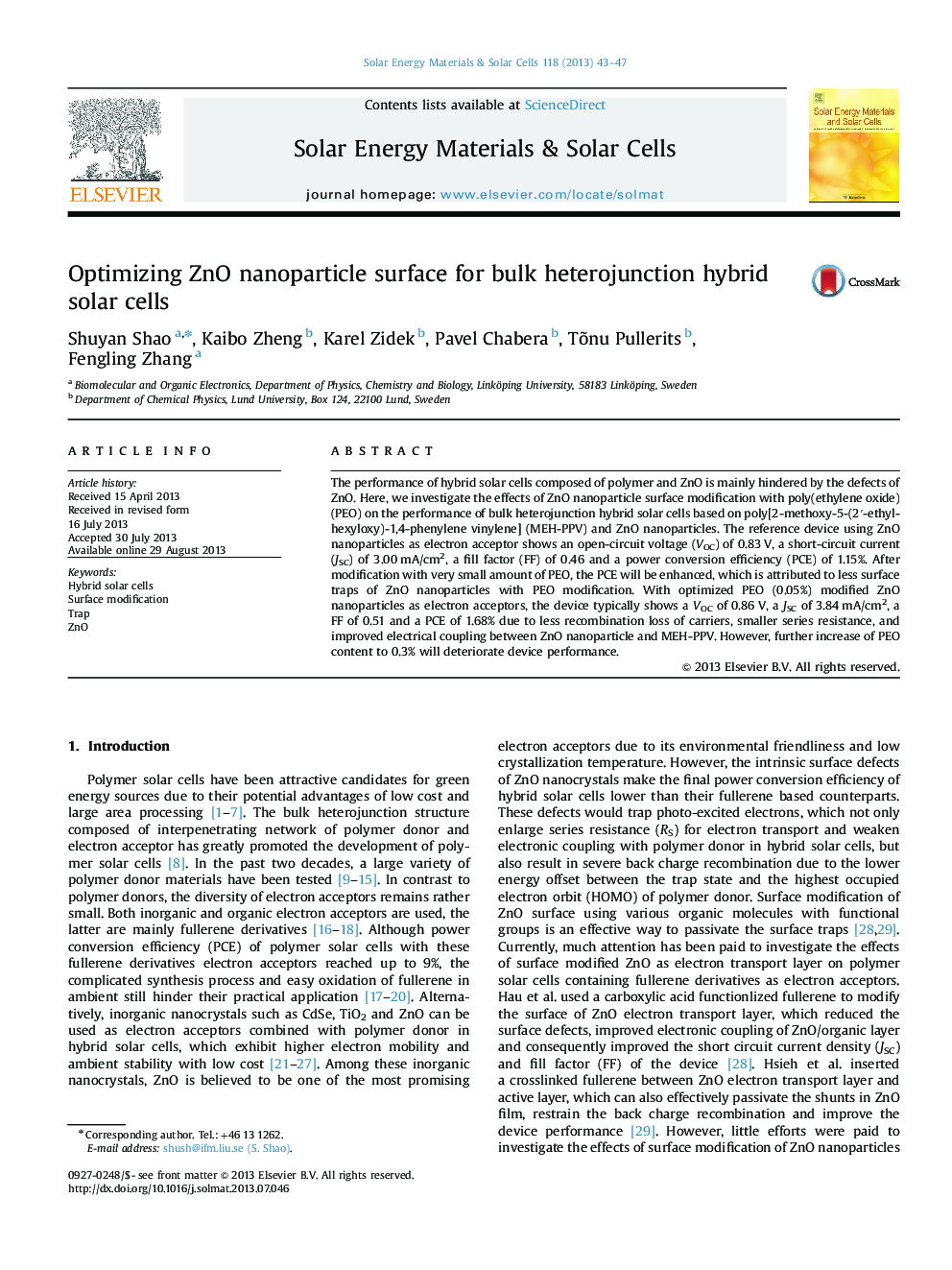| Article ID | Journal | Published Year | Pages | File Type |
|---|---|---|---|---|
| 78292 | Solar Energy Materials and Solar Cells | 2013 | 5 Pages |
•The device using poly(ethylene oxide) modified ZnO nanoparticle as electron acceptor shows improved performance.•The surface traps of the ZnO nanoparticle are passivated.•The back charge recombination from trap state to the highest occupied molecular orbit is restrained.•The reduced series resistance contribute to the improved performance of the bulk heterojunction device using poly(ethylene oxide) modified ZnO nanoparticle acceptor.
The performance of hybrid solar cells composed of polymer and ZnO is mainly hindered by the defects of ZnO. Here, we investigate the effects of ZnO nanoparticle surface modification with poly(ethylene oxide) (PEO) on the performance of bulk heterojunction hybrid solar cells based on poly[2-methoxy-5-(2′-ethyl-hexyloxy)-1,4-phenylene vinylene] (MEH-PPV) and ZnO nanoparticles. The reference device using ZnO nanoparticles as electron acceptor shows an open-circuit voltage (VOC) of 0.83 V, a short-circuit current (JSC) of 3.00 mA/cm2, a fill factor (FF) of 0.46 and a power conversion efficiency (PCE) of 1.15%. After modification with very small amount of PEO, the PCE will be enhanced, which is attributed to less surface traps of ZnO nanoparticles with PEO modification. With optimized PEO (0.05%) modified ZnO nanoparticles as electron acceptors, the device typically shows a VOC of 0.86 V, a JSC of 3.84 mA/cm2, a FF of 0.51 and a PCE of 1.68% due to less recombination loss of carriers, smaller series resistance, and improved electrical coupling between ZnO nanoparticle and MEH-PPV. However, further increase of PEO content to 0.3% will deteriorate device performance.
Graphical abstractThe performance of hybrid solar cells based on ZnO electron acceptor is hindered by the surface defects of ZnO. Poly(ethylene oxide) (PEO) surface modification to ZnO nanoparticle can effectively reduce its surface traps, which reduces the series resistance and increases the shunt resistance. It not only improves the charge collection, but also prohibits the back charge recombination from trap state to the highest occupied molecular orbit of polymer. Consequently, the device using PEO modified ZnO nanoparticle as electron acceptor shows improved open-circuit voltage (VOC), short circuit current density (JSC), fill factor (FF) and power conversion efficiency (PCE) compared to the reference device using pristine ZnO electron acceptor.Figure optionsDownload full-size imageDownload as PowerPoint slide
